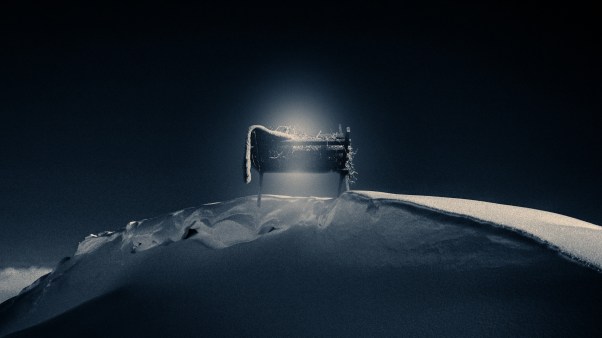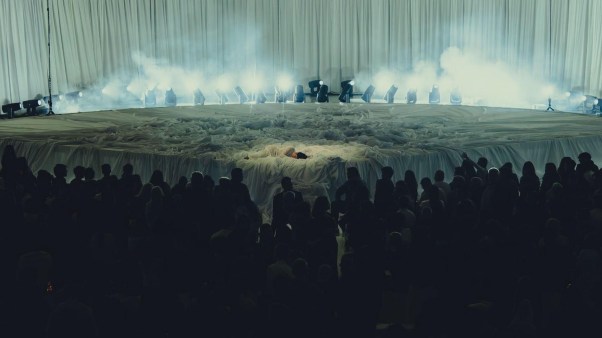Like a brightly burning candle in the wind: That’s how C. W. Howell depicts the brief history of the American intelligent design movement in his new book, Designer Science.
Howell, a researcher based at Duke University, seeks to show where intelligent design (“ID”) fits alongside more established frameworks for relating the Bible’s account of Creation with the findings of modern evolutionary science. Young-earth creationism, he suggests, has gained a popular following and left its stamp on 21st-century Christian thought. So too, he observes, has its chief philosophical rival, theistic evolution (or its newer cousin, evolutionary creationism).
By contrast, Howell presents ID as more a brief flicker than a lasting force. In his telling, it emerged on the national stage with the 1996 Mere Creation Conference at Biola University and largely faded from view after the 2005 Kitzmiller v. Dover Area School District trial in Dover, Pennsylvania, which ended with a federal judge ruling that teaching ID in public schools amounts to promoting a religious belief.
When Howell and others refer to “ID,” they do not mean age-old arguments for God rooted in the evidence of intricate, purposeful design in nature. Nor are they invoking the narrower natural theology of late 18th-century English cleric William Paley, best known for proposing that an ordered universe presupposed a “divine watchmaker” who set it into motion.
Instead, the term ID encompasses specific ideas first advanced in the 1990s by American law professor Phillip Johnson, philosopher William Dembski, biologist Michael Behe, and others associated with the Discovery Institute think tank. ID theorists coalesced around the philosophical position that science should not arbitrarily exclude supernatural explanations for physical phenomena. Over time, they added arguments suggesting that “irreducible complexity” in biology—systems too intricately arranged to be broken into separately evolved parts—points toward intelligent design in nature.
As such, Howell writes, ID became “a broad, ideologically diverse, and theologically accommodating approach to anti-evolution” that at first drew an array of intellectual theists under its “big tent.” According to Howell, however, the movement’s initial strength proved its ultimate weakness. As he suggests, the thin gruel of its “ideological minimalism” could not sustain the allegiance of partisans for whom ideas carried deep meaning.
Whenever ID theorists sought to add meat to the broth, they alienated some faction. Without a robust scientific component, ID remained an ideological critique of evolutionary science that blurred methodological with philosophical naturalism to make its case that Darwinism went hand in hand with atheism.
Regarding questions of human origins, survey data from recent years suggests that American Christians fall into two camps of roughly equal size. Each takes faith seriously and posits a divinely majestic Creator crafting the physical universe.
Young-earth creationists look for evidence in nature supporting a literal reading of the early chapters of Genesis. Shaped by the mid-20th century work of Baptist engineer Henry Morris and apologetics organizations like Ken Ham’s Answers in Genesis, they emphasize a six-day creation occurring less than 10,000 years ago, a theologically significant fall from grace, and a worldwide flood. Theistic evolutionists (and evolutionary creationists) see a preexisting God creating non-mechanistic laws of nature and superintending them to shape the course of creation. Their views draw from earlier efforts by Christian thinkers to address 19th-century developments in science—efforts now carried on by the BioLogos Foundation, figures like Francis Collins (its founder), and various Catholic scholars working in the tradition of Thomas Aquinas.
Both groups eventually turned against ID, Howell writes. Young-earth creationists objected to ID because it failed to support their theological presuppositions. Meanwhile, theistic evolutionists and evolutionary creationists despaired of ID’s embrace of “a highly mechanical and modernist conception of reality” that partakes of “the very reductionism it claims to be resisting” and postulates “a modern conception of divine action in the world.” In short, young-earth creationists regarded ID as insufficiently creationist, while religious evolutionists regarded it as overly naturalistic.
Perhaps because Howell places himself in the latter camp, Designer Science is especially insightful in presenting the theistic-evolutionist and evolutionary-creationist critique of ID. In a notable moment of candor appended to the book’s introduction, Howell states that he “grew up in a young-Earth creationist setting” and became “interested in ID as a high school and college student” before migrating to theistic evolution and becoming an Eastern Orthodox Christian. Designer Science is based on his PhD dissertation in religion from Duke.
Given Howell’s religious background and his book’s academic origins, it is not surprising that Designer Science is a dense exposition of intellectual ideas with lots of citations. It draws mostly on published writings by thought leaders in the three camps, with an occasional nod to atheistic adversaries like Richard Dawkins. But it makes little mention of either the biologists who greeted ID with withering rebuttals or the tepid response from Christians generally.
However, Howell does note the appeal of ID to political conservatives, who carried it into the culture wars of the 1990s and early 2000s after the Supreme Court’s 1987 ruling against teaching creation science in public schools. They offered ID as a nonsectarian critique of evolution that could pass muster under the establishment clause. Indeed, Howell suggests that young-earth creationist leaders initially warmed to ID precisely for this strategic reason even as they questioned its heft as an evangelistic tool.
After ID concepts began appearing in state and local public-education policies, culture-war dynamics led to the showdown at Dover. Local young-earth creationists and Discovery Institute officials pushed the Dover school board to adopt ID-friendly policies in 2004. Local citizens, many of them churchgoers, brought suit against those policies.
Howell presents theistic evolutionists as leading the opposition. “At Dover,” he writes, “ID was roped into a conflict by the creationist wing of its big tent, and it wilted under the spotlight—because it could not offer a positive scientific alternative but also because it could not cleanly separate itself from its creationist allies.” After the federal court ruled that teaching ID in public schools also violated the establishment clause, Howell reports, leading young-earth creationists saw less reason to promote ID than before.
After the Dover decision, public and academic interest in ID began waning. Howell depicts embattled ID theorists “doubling down” on “the same general arguments that had failed to win the day in court” but with “a far more conspiratorial tone and air of grievance.” Along with a “sense of persecution,” he writes, came a growing “hostility toward the scientific world.”
Such an anti-expert attitude had been there from the beginning, Howell notes, “but it came to the forefront after 2005.” ID theorists increasingly questioned “the prevailing scientific wisdom about vaccines, climate change, astrophysics, and AIDS.” Within the ID movement, Howell writes, distrust of the scientific establishment became “the basis for a worldview deeply skeptical of scientific progress and knowledge.”
If ID began as an “ecumenical anti-evolutionary movement,” Howell concludes, it eventually became “just one of many highly skeptical attacks on contemporary science.” He views this as ID’s lasting legacy. “Even though it did fail to achieve its goal of remaking contemporary science,” he writes, “intelligent design both planted the seeds and nurtured the growth of extreme skepticism in the world of US conservatism.”
But this assessment likely overstates ID’s role in furthering these trends. It fails to consider other strong forces seeding and nurturing suspicion of scientific expertise, such as political polarization over issues involving science, the effects of COVID-19-era restrictions on public trust, and the explosion of anti-expertise conspiracy theories on the internet.
A question remains after reading Howell’s book. Was ID ever more than an attack on science that blurred methodological naturalism with philosophical naturalism to make its case against evolutionary biology? Both young-earth creationism and theistic evolution are rooted in deep religious sentiments that are intrinsic to their lasting appeal. They continue to influence modern American Christianity. Howell’s book is insightful in suggesting reasons why intelligent design hasn’t attained a similar stature.
Edward J. Larson is a historian and legal scholar teaching at Pepperdine University. He is the author of Summer for the Gods: The Scopes Trial and America’s Continuing Debate over Science and Religion.

















